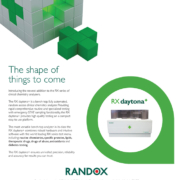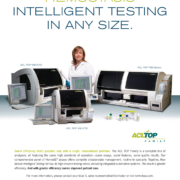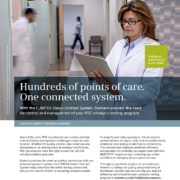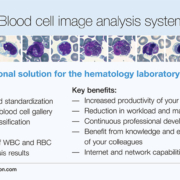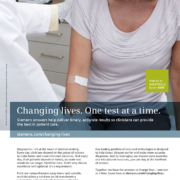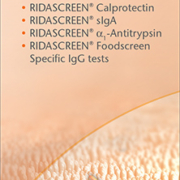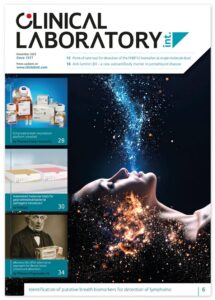Vitamin D is derived from food, and human beings need exposure to sunlight for its synthesis. This is achieved through the absorption of ultraviolet B radiation by 7-dehydrocholesterol in the skin. However, certain sections of the population cannot produce Vitamin D in sufficient quantities; such at-risk groups are the focus of screening.
The principal function of Vitamin D is to enable absorption of calcium and phosphorus and promote bone health. It is metabolized in the liver to 25-hydroxyvitamin D (25OHD). The kidneys activate 25OHD to 1,25-dihydroxyvitamin D, which in turn regulates calcium, phosphorus and bone metabolism.
25OHD is the key circulating form of vitamin D, and as a biomarker, is generally the target of screening.
The deforming condition known as rickets, caused by a deficiency of Vitamin D, was a scourge in children until the early 20th century. The vitamin was identified in the 1920s. Though the crucial role played by sunlight in avoiding rickets had been known since the 1820s, it was only endorsed officially after over a century. Accompanied by fortification of milk and infant food with Vitamin D, rickets in industrialized countries soon became a thing of the past.
Rickets has, however, recently returned. One reason is ironic: the excessive promotion of breastfeeding and an unawareness that human milk does not suffice for an infant’s Vitamin D needs. This is exacerbated by modern lifestyles which discourage exposure to the sun, along with an overuse of sun screens and other forms of protection.
Benefits likely for several diseases
More recently, researchers have found that Vitamin D may also play a role in controlling a host of other diseases. This has revived the debate about screening.
Diseases against which Vitamin D provides benefits role are believed to include cancer, cardiovascular and cerebrovascular disease, diabetes and metabolic disorders, multiple sclerosis, inflammatory bowel diseases and certain neurological conditions.
Ethnicity, age and gender
Since the mid-1980s, it is accepted that Vitamin D’s role in the context of certain major medical conditions depends on ethnicity. The re-emergence of rickets has been concentrated, for example, in African Americans in the US and Asians in the UK.
In 1988-1994, the third US National Health and Nutrition Examination Survey (NHANES III) found significant differences between different ethnic groups in terms of 25OHD levels, which in turn correlated to a predisposition to both high blood pressure and diabetes.
In 2002, researchers found that Vitamin D’s role in pediatric Crohn’s disease was particularly pronounced in African-American children. Likewise, in the case of coronary artery disease, one high risk group consists of African-Americans with HIV.
Age-specific risks too are an area of concern. The elderly have been specifically targeted to study Vitamin D’s role in hypertension and in cognitive decline. Older women, in particular, seem prone to suffer from its deficiency, and thereby to adverse effects on their musculoskeletal system.
On the other side of the age scale, Vitamin D deficiency in infants seems associated with a range of chronic diseases in later life, from multiple sclerosis to Type 1 diabetes and schizophrenia.
More research still needed
Nearly all the research efforts cited above add caveats to their findings, underlying the role of Vitamin D in avoiding several diseases, but also calling for further investigation. Two recent meta-studies, which assimilate the results of previous research in this area, illustrate the problem.
One meta-study, published at the end of 2012, focuses on Vitamin D and cardiovascular disease (CVD). Its scope extends to 19 previous studies covering 6,123 CVD cases in nearly 66,000 subjects. It notes that, in spite of evidence about a link between CVD and Vitamin D deficiency, “optimal” levels of 25OHD for cardiovascular health “remain unclear,” and underlines that there is a “generally linear, inverse association” between circulating 25OHD in the range of 20-60 nmol/L and a risk of CVD. However, it calls for “further research” on 25OHD levels higher than 60 nmol/L.
The second meta-study dates to the end of 2013 and covers 18 prospective studies on Type 2 diabetes and metabolic disorders, involving 210,107 participants. It begins by observing that though “several studies have assessed Vitamin D in relationship with metabolic outcomes”, “results remain inconsistent.” It concludes that Vitamin D-targeted interventions “may be a useful preventive measure for metabolic diseases”, but also warns that “reliable evidence from carefully designed intervention studies, particularly those based on healthy populations, is needed to confirm observational findings.”
Differences in definition of risk persist
This bewildering array of qualifiers makes screening for Vitamin D problematic, for now.
Making things even more di ficult are continuing doubts about what level of 25OHD indicates a risk, and for who, when and where.
In the UK, the National Health Service (NHS) considers concentrations of less than 25 nmol/L to indicate “deficiency”, with “insufficiency” at 25-50 nmol/L, and “adequate” levels at more than 50 nmol/L. The American Journal of Clinical Nutrition (AJCN) specifies 25OHD below 50 nmol/L as an indicator of “deficiency”, while 51–74 nmol/L does so for “insufficiency”; the 74 nmol/L margin (as discussed below) has also been adopted in Poland. On its part, the National Institutes for Health (NIH) defines less than 30 nmol/L as “deficiency”, 30-50 nmol/L as “generally considered adequate” and more than 125 nmol/L to be associated with “potential adverse effects.”
Although the NIH says a 50 nmol/L concentration covers the needs of 97.5% of the population, it still leaves 7.5 million Americans in need of screening.
Seasonal factors confound the playing field further. In the UK, for example, the “insufficiency” concentration of 25-50 nmol/L for 25OHD is found in as much as half the country’s population, during spring.
Last but not least are doubts about the relevance of 25OHD concentration itself. For instance, the European Food Safety Authority (EFSA) stated, as recently as 2012, that while it “is a good marker of vitamin D status”, 25OHD can only be used “as a biomarker of vitamin D intake in people with low exposure to sunlight.”
Recommendations for screening
In the face of this, there is little consensus about screening for Vitamin D.
Nevertheless, national recommendations to prevent Vitamin D deficiency were instituted in Poland in 2009, and three years later in Hungary and Germany. Underlying the ongoing lack of clarity on the issue, the German Nutrition Society, which issued the recommendations, also evaluated Vitamin D as part of a separate investigation into vitamin availability, but this time was sanguine, except in the elderly. The elderly were also the subject of nutrition recommendations by the the International Osteoporosis Foundation in 2010.
In much of continental Europe, 50 nmol/L of 25OHD concentration is used to indicate Vitamin D sufficiency, in line with Britain’s NHS and the US NIH. However, most east and central Europeans tend to follow the 2009 Polish recommendations, which specified less than 50 nmol/L as deficiency, 50-75 nmol/L as ‘suboptimal’, with an ‘optimal’ target of 75–125 nmol/L; the latter straddles the lower and higher margins prescribed in the US by the AJCN and NIH, respectively (see above).
Iterations on thresholds, meanwhile, continue to proliferate, even with regard to at-risk populations. For example, while both Germany and the International Osteoporosis Foundation suggest 25OHD concentrations of 60 nmol/L in the elderly, in 2013 the European Society for Clinical and Economic Aspects of Osteoporosis and Osteoarthritis (ESCEO) recommended 50nmol/L for elderly women, and 75 nmol/L for “fragile” subjects.
The VITAL trial
It is to be hoped that many questions about the precise role of Vitamin D in battling some of the largest challenges facing modern medicine are answered in the years to come.
One such effort has, in fact, recently been launched. Known as VITAL (‘VITamin D and OmegA-3 TriaL), this interventional, randomized clinical trial is recruiting 20,000 men and women in the US to investigate whether daily dietary supplements of Vitamin D or omega-3 fatty acids reduces the risk of cancer, heart disease and stroke in people with no prior history of these illnesses.
Targeted supplementation most likely course
The above developments indicate that the argument about routine supplementation making “more sense” than screening is likely to yield place to “targeted” screening for at-risk populations, with an especially strong case for the elderly and infants.
Both groups were, in fact, highlighted in July 2011 Clinical Practice Guidelines on Vitamin D by the influential US-headquartered Endocrine Society. The Society also included “pregnant and lactating women,” “obese children and adults”, and patients on “anticonvulsant medications, glucocorticoids, antifungals such as ketoconazole, and medications for AIDS.”
Standardizing lab tests
In the meanwhile, one major concern for clinical laboratories with regard to Vitamin D tests seems to have been addressed. Until recently, serum 25OHD concentrations showed considerable variations, depending on the type of assays used (the most common is liquid chromatography). This led to differences among laboratories in their findings. The implication of such differences has been significant, especially given the differences in definitions of Vitamin D sufficiency and insufficiency.
In 2009, the US National Institute of Standards and Technology (NIST) released SRM 972, a reference material for 25OHD. SRM 972, updated by NIST in February 2013 to SRM 972a, is also used in Europe.





